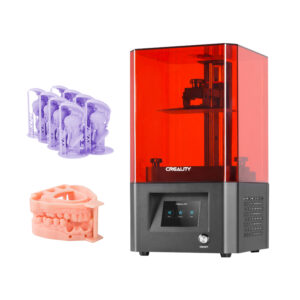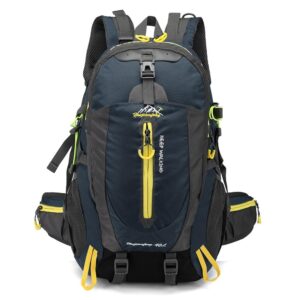To facilitate Biological Product Deviation (BPD) reporting, FDA has developed a standardized reporting form that may be submitted electronically via e-mail or in paper format by mail to CDER. Form FDA 3486 is organized into 4 main sections:
- Facility Information
- Biological Product Deviation (BPD) Information
- Unit / Product Information
- Additional Comments
Each main section is organized into several numerical sub-sections.
The reporting establishment is the establishment that had control over the distributed product at the time the defect occurred.
For example:
- A BPD that occurs at one of several locations of a licensed establishment may be reported by the headquarters location. However, the reporting establishment for the reported BPDR should be the location that had control over the product at the time the defect occurred.
- A BPD that occurs at a contract manufacturing site (e.g., test laboratory, filling facility), should be reported by the license holder of the product.
-
Reporting Establishment Information
Enter the Reporting Establishment’s name and address.
Enter the following information in the event we need more information or need to contact you:
- Point of Contact: Name of the person who is the point of contact for the report.
- Telephone: Enter the telephone number of the person who is the point of contact.
- E-mail: Enter the e-mail address of the person who is the point of contact.
-
Reporting Establishment Identification Number
You must enter a valid registration number.
Registration Number – FDA Establishment Identifier (FEI) assigned to your facility. To obtain your FEI number, please visit the FDA’s FEI Search Portal. This portal will allow you to look up your own FEI number(s) and obtain your registration information. There is no charge to create an account. If you have difficulty accessing your information via the portal, you may contact: edrls@fda.hhs.gov
-
If the BPD occurred somewhere other than the above facility, please complete Section A3 and Section A4 in Form FDA 3486, otherwise proceed to Section B1.
Enter the Establishment’s name and address.
- Establishment Identification Number: Enter the Establishment Identification – Registration number.
B. Biological Product Deviation (BPD) Information
- Establishment Tracking Number – Your establishment’s internal tracking number to identify individual reports. This number can consist of no more than 25 numbers and/or characters. The tracking number should not be your establishment identification number. It should be a unique identifier for each report. Your system of assigning tracking numbers should not allow for duplicate numbers. FDA uses this number to identify follow up reports and link these subsequent reports with the initial report in our system. If your system assigned separate number for tasks such as CAPA in addition to the initial investigation, include the initial establishment tracking number submitted in initial report in all subsequent reports. Additional establishment tracking numbers should be entered in section B7 Follow-up.
- Date BPD Occurred – The date the deviation or unexpected event occurred. Please enter using the format mm/dd/yyyy.
- Date BPD Discovered – The date the deviation or unexpected event was discovered. The date discovered is the date you acquire information reasonably suggesting that a reportable event has occurred. If the event occurred at your contractor site, the date of discovery is when the contractor learns about the deviation or unexpected event. Please enter using the format mm/dd/yyyy.
- Date BPD Reported – The date the report is completed. Please enter using the format mm/dd/yyyy.
- Description of BPD – Describe the event in detail, including description of what happened and a summary of all relevant information (e.g., labeling, test results, etc.). Do not include any confidential information, such as patient or employee names. Use page 2 for additional space.
- Description of Contributing Factors or Root Cause – Describe all contributing factors or root causes of the deviation or unexpected event. Please indicate, if after the investigation, a root cause cannot be determined. Use page 3 for additional space.
- Follow-up – Describe the intended short term and long-term follow-up action plans, if applicable. You do not have to implement the corrective actions identified at the time of filing this report. Use page 4 for additional space.
- Please Enter the 6-character BPD Code: Enter the code from list of BPD Codes for licensed non-blood products in Biological Product Deviation Reporting and HCT/P Deviation Reporting – Deviation Codes that best describes the BPD. Use the Non-Blood Deviation Codes for CDER BPDs.
The non-blood BPD Code is made up of three levels:
Level 1
(XX) identifies the system affected in which there was a breakdown or failure, resulting in the distribution of an unsuitable product. Use the appropriate guidance document for determining the system affected.
BPD Code | XX | – | | – | |
For non-Blood Products the systems include:
IM – Incoming Material Specifications
PC – Process Controls
TE – Testing
LA – Labeling
PS – Product Specifications
QC – Quality Control and Distribution
Level 2
(YY) of the code is a subset of the system affected.
Level 3
(ZZ) contains more detailed information regarding the BPD. Select the code that most closely describes the deviation or unexpected event (see list of BPD Codes for licensed non-blood products in Biological Product Deviation Reporting and HCT/P Deviation Reporting – Deviation Codes). If you cannot determine the appropriate code, enter question marks. For example ??-??-?? or LA-??-??. However, a selected code is strongly encouraged.
BPD Code | XX | – | YY | – | ZZ |
-
Check the type of product: Check either Blood or Non-Blood to identify the type of product potentially affected by the BPD. All CDER-regulated biologics are non-blood products and Section C1 in Form FDA 3486 should be N/A. All blood products are regulated by CBER.
Blood Product – includes products manufactured by blood and plasma establishments, such as whole blood, red blood cells, fresh frozen plasma, platelets, and plasma for further manufacture and Source Plasma.
Non-Blood Product – includes products manufactured by a facility other than blood establishments, such as vaccines, therapeutics, allergenics, in-vitro diagnostics, plasma derivatives, and HCT/Ps.
-
Non-Blood Products
Total Number of Lots: Enter the total number of distributed lots potentially affected by the BPD.
For each lot provide the following:
Lot # – lot number of the product.
Expiration Date – the date the product expires.
Product Type – major category of products:
Therapeutics is the only type regulated by CDER.
Regulated by CBER:
Allergenics
Derivatives
In-Vitro Diagnostics
Vaccines
“351” HCT/Ps
“361” HCT/Ps
Gene Therapy Products
Product Code- Use the list of specific non-blood product codes in Biological Product Deviation Reporting and HCT/P Deviation Reporting – Non-Blood Product Codes.
Disposition – provide the disposition of the product using the following list – DO NOT list any products that were not distributed. Valid dispositions are:
- Destroyed by consignee – product distributed and destroyed by consignee.
- Distributed – product distributed, information regarding final disposition not available at time of reporting.
- Expired – product distributed and is now expired, no other information available.
- Returned and destroyed – product distributed, returned to manufacturer and destroyed.
- Returned and reworked – product distributed, returned to manufacturer and reworked according to an appropriate procedure.
- Sent to distributor – product distributed to a facility outside of your control for further distribution.
- Other – if other is selected, please explain in Additional Comments
Notification – provide either “yes” or “no” to identify whether consignee was notified.
D. Additional Comments
Use this section to further explain any additional information or product information, such as product code, product disposition, or notification. If multiple lots have the same information (i.e., expiration date, product code, disposition, and notification) enter the information for the first lot number and list the additional lot numbers in this section. If more than 18 lots were potentially affected, enter the product information for the first 18 units and enter the remaining unit numbers in this section.






